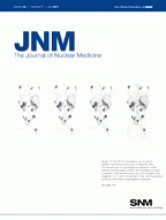Abstract
Both anatomy- and physiology-based approaches to patient management have advantages and limitations. Compared with the latter, the former has a superior ability to exclude disease and does not miss high-risk coronary artery disease (CAD). However, it is limited by a possibility of overestimating the severity of CAD and of potentially failing to determine which posttest therapeutic approach optimizes treatment benefit. On the other hand, although a physiology-based approach could potentially identify optimal therapeutic strategies, the possibility of both false-positive and false-negative findings is a concern. This review incorporates some of the more recent advances in CT coronary angiography and myocardial perfusion imaging (MPI), including PET MPI, into a discussion of anatomic versus physiologic imaging and provides our perspective on how an anatomy-based testing strategy centered in CT coronary angiography versus a physiology-based testing strategy with MPI may be clinically used for the evaluation of known or suspected CAD in symptomatic patients.
Footnotes
Learning Objectives: On successful completion of this activity, participants should be able to describe (1) the various types of noninvasive cardiac imaging tests and how the results of each are utilized; (2) recent advances in CT coronary angiography, PET myocardial perfusion imaging, and SPECT myocardial perfusion imaging of coronary artery disease; and (3) the clinical use of anatomic versus physiologic tests in symptomatic patients with known or suspected coronary artery disease.
Financial Disclosure: The authors of this article have indicated no relevant relationships that could be perceived as a real or apparent conflict of interest.
CME Credit: SNM is accredited by the Accreditation Council for Continuing Medical Education (ACCME) to sponsor continuing education for physicians. SNM designates each JNM continuing education article for a maximum of 1.0 AMA PRA Category 1 Credit. Physicians should claim only credit commensurate with the extent of their participation in the activity.
For CE credit, participants can access this activity through the SNM Web site (http://www.snm.org/ce_online) through June 2012.
- © 2011 by Society of Nuclear Medicine







